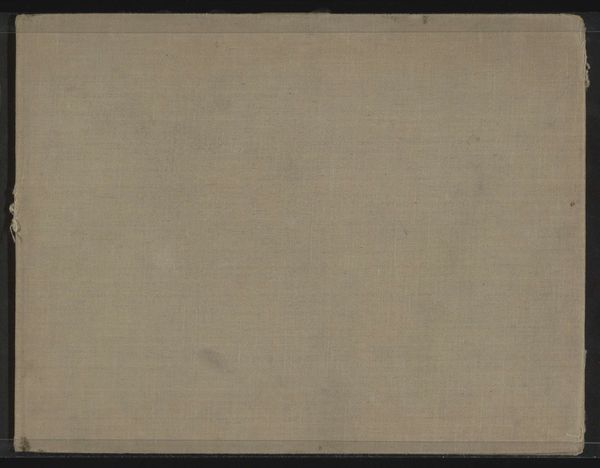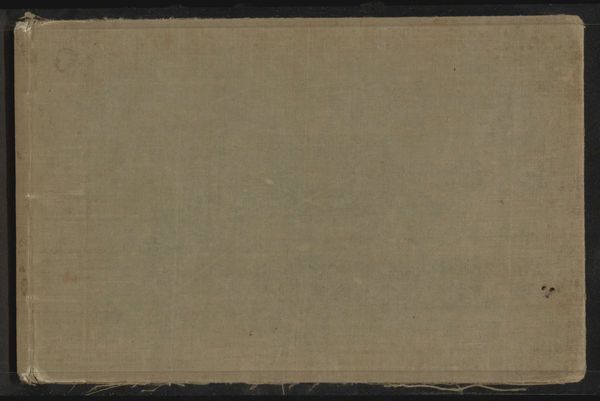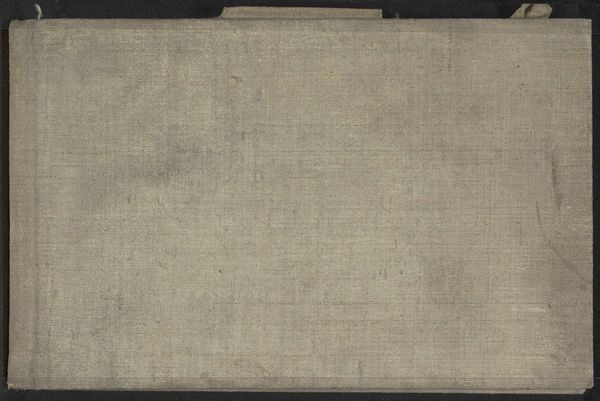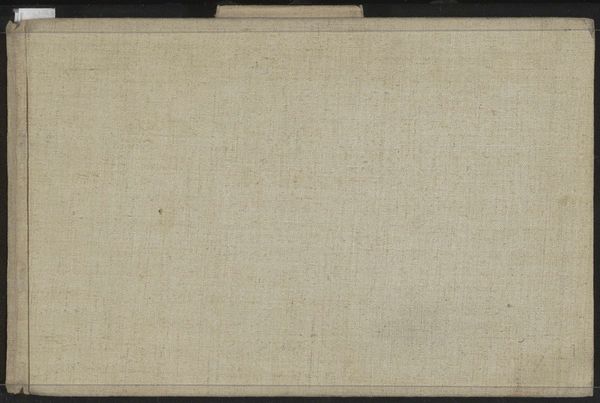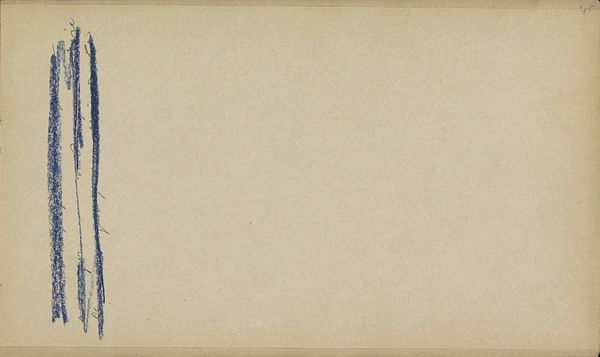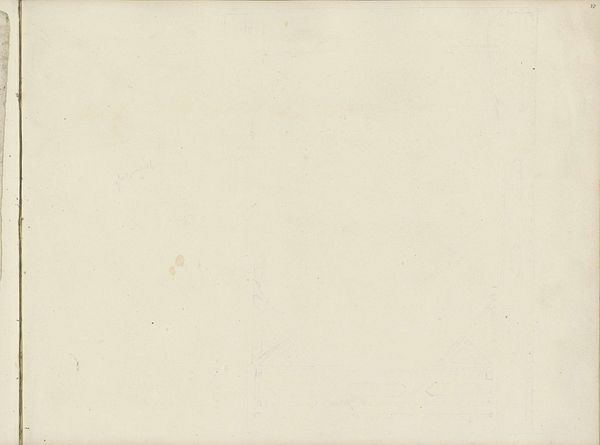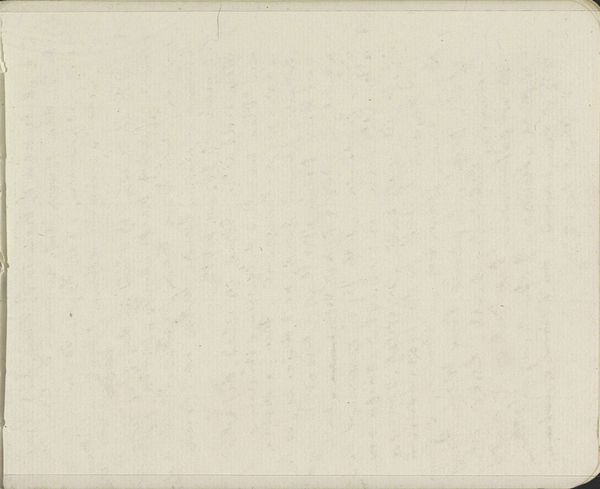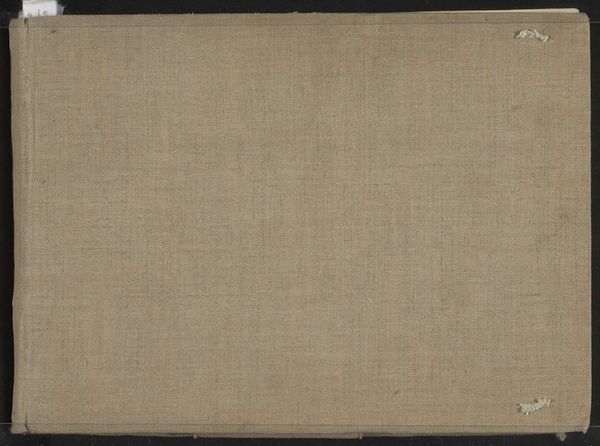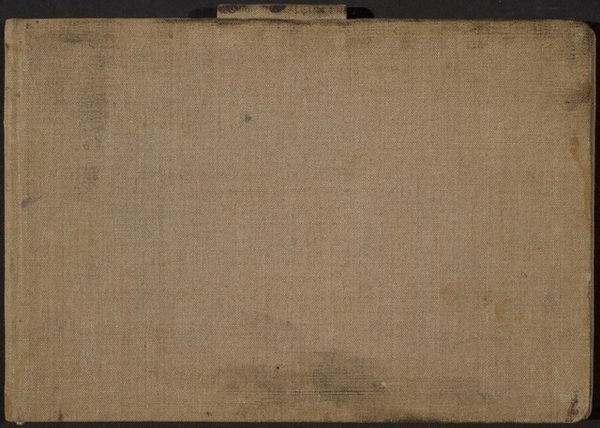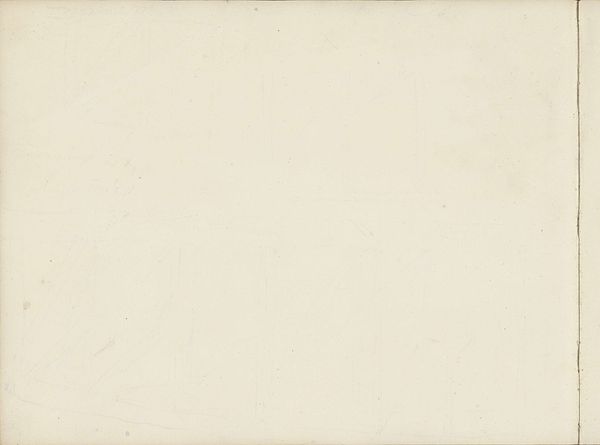
drawing, paper
#
drawing
#
landscape
#
paper
Dimensions: height 240 mm, width 318 mm, thickness 14 mm, width 645 mm
Copyright: Rijks Museum: Open Domain
Curator: Well, doesn’t that just look like potential waiting to burst forth? An untouched journal, ready for dreams. Editor: Precisely! Today we’re looking at a sketchbook comprising 39 sheets of paper, attributed to Bramine Hubrecht, created sometime between 1865 and 1913. Curator: A secret garden of sketches—I wonder if she ever felt shy filling those pages. The cover itself has a humble, earthy charm; all umber and muted crimson trim. It makes me want to fill it with nature musings and wild things! Editor: Considering the era in which Hubrecht was working, we must consider the position of women in the arts and society more broadly. Sketchbooks like this could have been spaces of freedom for self-expression and exploration, away from societal constraints, and this reminds us how constrained even the most privileged women were. Curator: Yes, exactly! A portable refuge—or a very dangerous and defiant space. What did she dare to think and create in private, what sort of things would never appear in the family portraits? Landscape drawings mainly, I gather? Editor: Indeed, Hubrecht is classified within the landscape style, and using "drawing" as her primary medium. It reminds us that even in representing the external world, artists engage with inner landscapes shaped by their position. I find myself asking if those external landscapes were acting as allegories for the women’s movement at the time, which began making strides toward liberation, slowly but inexorably reshaping the terrain. Curator: Or maybe those sweeping fields were just beautiful to her! Maybe she just wanted to get the angle of the light just so on that tiny leaf. Is defiance always so grand? Sometimes, doesn’t it just feel like being truly seen by the world as it is? The intimacy and smallness of a sketchbook could mean safety or the freedom of tiny, imperceptible revolutions. Editor: And maybe that freedom is the most radical act of all, I suppose. Curator: Here’s to both the bold sweeping movements and quiet, rebellious moments.
Comments
No comments
Be the first to comment and join the conversation on the ultimate creative platform.
